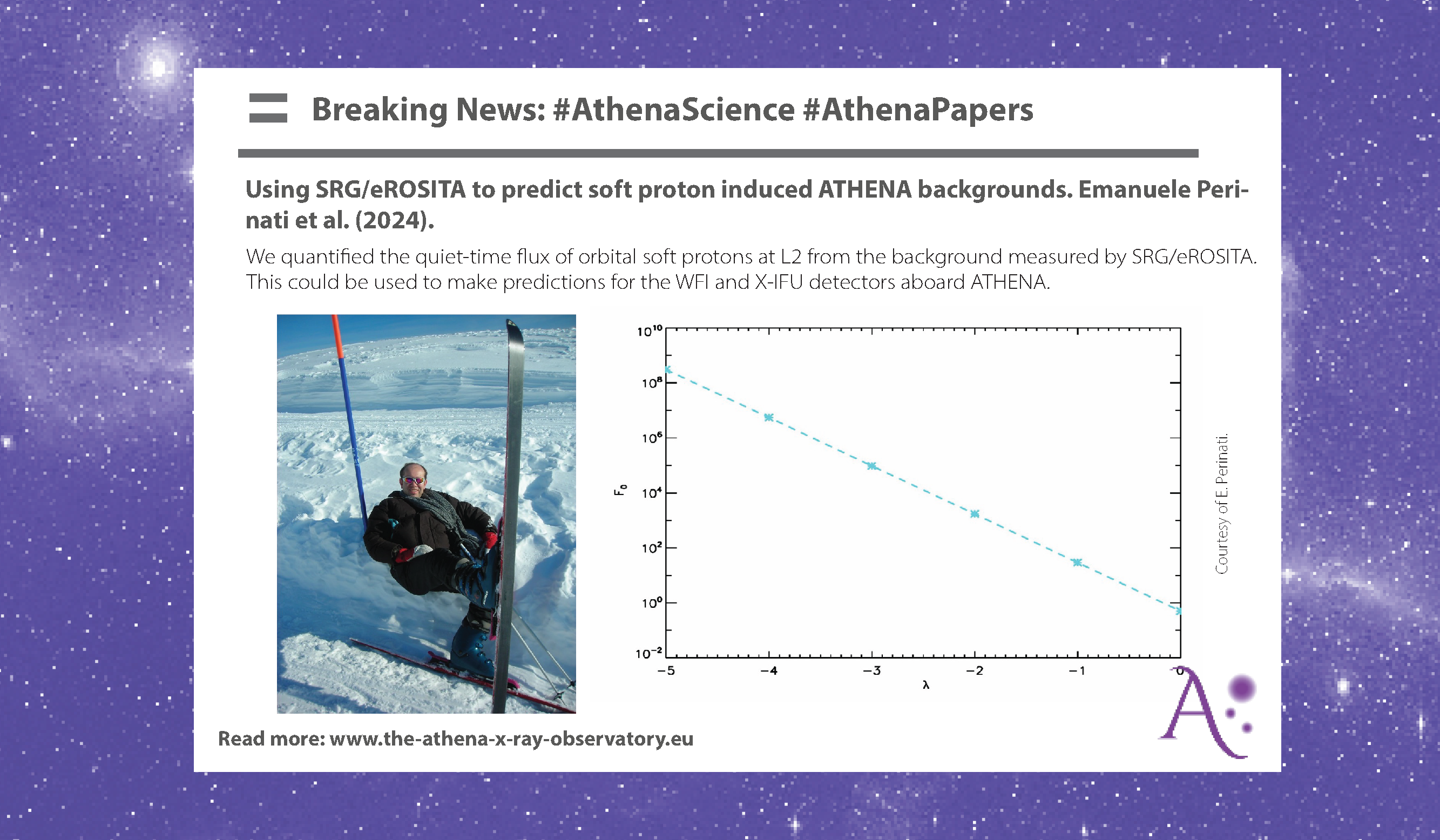
Using SRG/eROSITA to predict soft proton induced Athena backgrounds

Caption: Correlation between index λ and coefficient F_0 for an orbital soft proton flux with assumed power law slope Fsp(E) = F_0 x E^λ between 10 keV and 100 keV (in units of p/cm^2/sr/s/keV), that could be inferred from the SRG/eROSITA background.
By E. Perinati
Orbital soft protons have affected the performance of the X-ray detectors aboard Chandra and XMM-Newton, and they pose a threat for future high energy astrophysics missions with larger aperture, such as ATHENA.
We exploited the background data collected by SRG/eROSITA at L2 to quantify the quiet-time flux of soft protons encountered along the orbit, from the computed proton transmission yield of its mirror system. The inferred flux is way lower than assumed thus far for the L2 space environment, e. g. from the AREMBES study. We then used it to make an estimate of soft proton induced background for the WFI and X-IFU detectors, if ATHENA was in the same halo orbit around L2. To do this, we modelled the soft proton transmission yield of the envisaged optical/thermal filters, while for the SPO we relied on the yield previously computed by Fioretti et al.
We found that the soft proton induced WFI and X-IFU backgrounds could be most likely expected within the requirement. Which suggests that, as far as soft protons are concerned, a similar orbit around L2 could be safe for ATHENA as well, possibly less infested with soft protons than L1. This result is of particular significance in light of the fact that our recent laboratory tests showed that the majority of the soft protons in the critical energy range gets neutralised via charge exchange at the mirror surface, when scattered off an SPO sample. The neutralised protons would not be affected by the planned magnetic diverters, therefore it will be even more important to operate ATHENA in a region of space sufficiently free from soft protons. This is why we also suggest in this paper, as a general precaution and mitigation strategy, that the WFI optical blocking filter could be made slightly thicker; whereas, according to simulations, the baseline configuration of the X-IFU thermal filters would be able to guarantee enough attenuation of the soft proton flux onto the detector.

